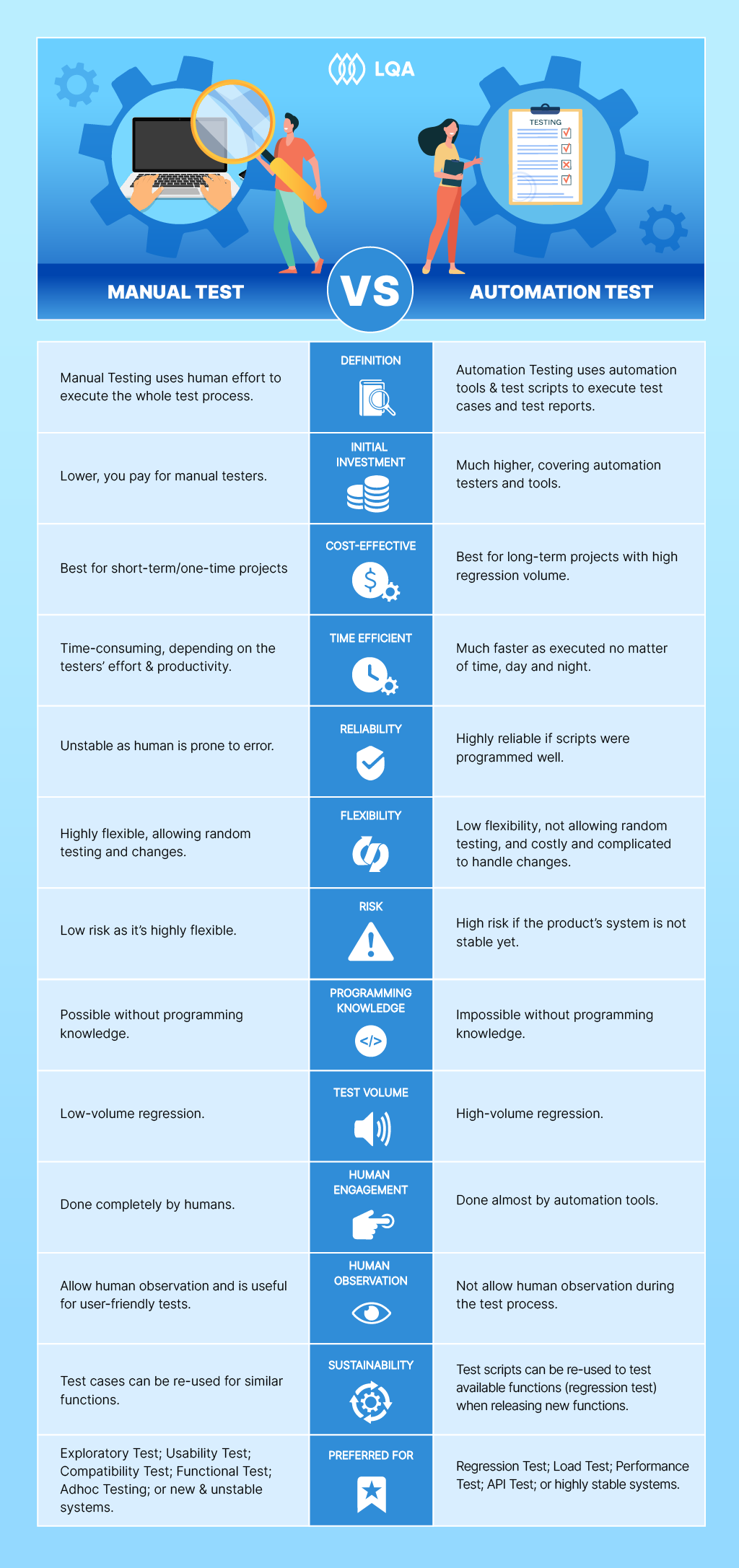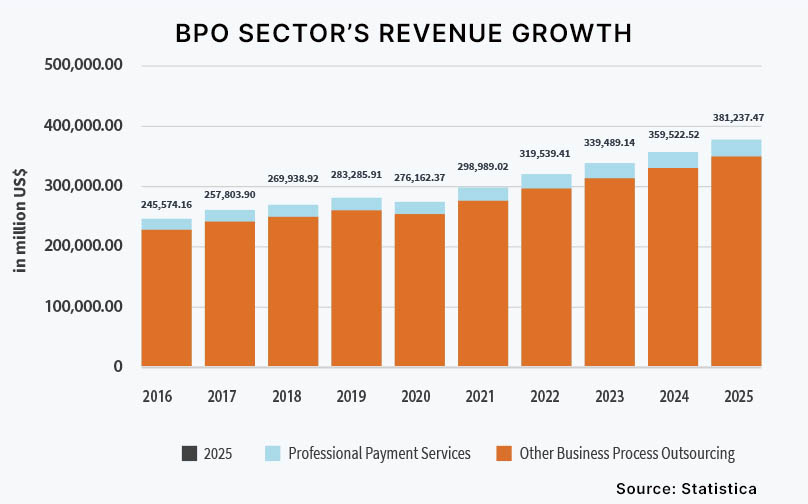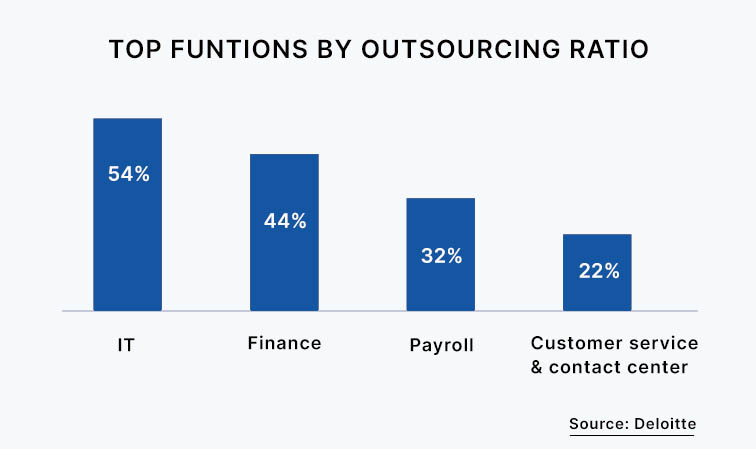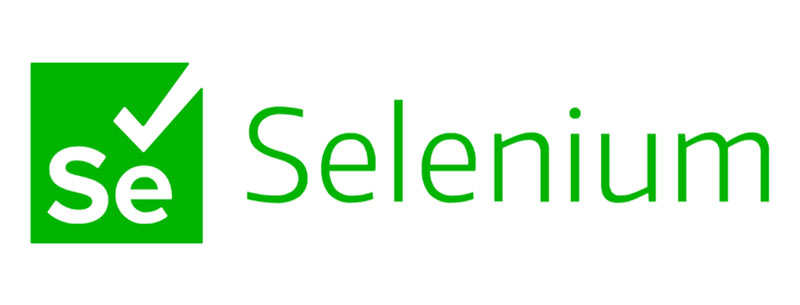Automation testing has emerged as a new destination for quality assurance, resulting in consistently high demand for automation testing labor. But amid the tech talent war, companies do need an effective test automation engineer hiring process to attract quality automation candidates.
So, in this article, we will guide you through 5 steps to hire a test automation engineer. This guide comes from real recruitment experience at our company as well as consulting some experts in the industry. Let’s take a look first:
- Clarification of requirements
- Write a job description
- Source and shortlist candidates
- Interview
- Final step
How To Hire A Test Automation Engineer?
1. Clarification of requirements
Clarifying the role should be the first step to hiring a true Test Automation Engineer. To do that, you need to define whom you want to hire, their contribution and the skills needed. At LQA, we divide automation test workers into three main groups which are junior, middle, and senior. Also, this article will focus more on a senior automation tester interview as it requires more aspects to consider.
Generally, a senior tester engineer will take part in the planning phase, make decisions, handle complicated tasks, and lead a small team. He/she can also be the bridge between the team and other stakeholders if needed. Therefore, we often require as follows:
- Manual test experience
- Automation test experience
- Test scripts creation ability
- Understanding of test automation technique
- Language ability
- Management skills
As automation tests differ from manual tests in the way that they use code-based test scripts to automate processes, a senior automation test worker should be able to define, develop, execute, and maintain test scripts. He/she also possesses manual test experience and understands test cases, hence can decide when to use manual tests and when to apply automation tests to optimize the QA process. Besides, he/she ideally understands various kinds of test automation frameworks to select the best suit.
2. Write a proper automation test engineer job description
A smart JD is a key to an effective test automation engineer hiring process. This is when the hiring department understands the above requirements and builds an ideal candidate profile on paper. As we are seeking a senior role, the job description (JD) should be custom and specific. We recommend you include the following aspects.
Company summary
Talk about the employer branding, working environment, and whatever makes your company stand out. Especially, employer branding is an important part of a good job description. According to Glassdoor statistics, 75% of active job seekers are more likely to apply if an organization manages its employer brand. So, don’t forget to briefly convey your company’s reputation in your JD.
Job responsibilities
Here, let talk about the role’s duties and contribution to the company. Senior automation engineers also care about their effect on the company as well as their career path. Thus, they wish to see more impactful activities in the responsibility section, such as planning, managing, optimizing, and innovating, instead of raw tasks only.
Requirements
This is the section for must-have and nice-to-have skills and expectations for this role. Here, clearly mention what you expect from the applicant. For example, bachelor’s degree in computer science, Python language knowledge, mobile or web application automation test experience, Selenium WebDriver framework ability, etc. Plus, they ideally have equivalent certificates in software testing like the ISTQB and in languages such as IELTS certificates.
Benefits
And last but not least, don’t forget to include details of the salary and other compensation that he/she will get. According to Glassdoor, money is the biggest motivator for 67% of candidates. Meanwhile, Zety statistics showed that 74% of job seekers expect to find salary information right in the JD.
3. Source test automation candidates and pre-screen
In this step, the HR department seeks candidates through various sources, including active and passive candidates. Remember to post the job as soon as possible to increase the chance of receiving more applications as well as for the selected candidate to get ready. Particularly, when you source passive candidates who are employed, it may take a month or more for them to be ready.
Here, we recommend two effective ways to source automation engineers as follows.
Find them in forums and groups for automation engineers, such as:
- The largest communities of testers in the world like uTest.
- Top-performed automation test groups on Facebook like Automation testing – Seleniums.
- The top recruitment sites for IT talents, e.g. Dice and Linkedin.
- Place where tech engineers are the most active such as Github and StackOverflow.
Partner with companies that provide hiring support, including:
Recruiters then come up with a list of potential candidates, do pre-screening and brief telephone interviews, and return to the automation department with a list of ideal profiles. The person in charge of the test department will screen again to find out the top potential candidates for the interview phase.
At LQA, the automation leader is responsible for screening and evaluating the candidates. For such high-level positions, apart from reviewing the information provided by this person, he also refers to the references of previous colleagues and checks the candidate’s social networking profile.
4. Conduct automation test engineer interviews
After several steps to find out the most potential applicants for a test automation expert, we now come to an in-person automation test interview. But first, do you know what our CTO and automation leaders advise the most when it comes to an interview in tech? They are:
- Make it a comfortable and practical talk instead of police interrogation (obviously, right?).
- Focus on effect, as experience is not always the number of working years.
- Don’t bring a big technical test into the interview that takes 5-6 hours of your candidates, unless you are hiring employees for Google and Microsoft.
Why should you focus on effect?
At LQA, we concentrate on the impact when hiring a senior automation test engineer. E.g., if a candidate has generated 100 test scripts for UI automation tests but none of them work efficiently, or he has executed a small number of similar tasks during his previous 3 years of working, then we won’t prioritize him.
Conversely, once an applicant with less working time proves his ability via the effect, such as in a previous automation project, he was able to lower the time for executing a regression cycle from this time to that time and reduce time-to-market for new releases, then we highly value this.
Why shouldn’t you ask for a big test?
Because we already have an overview of the candidate’s ability from step 3, plus there are various questions that the interviewer can ask to deeper check if this person is proficient in automation testing techniques. At LQA, we prefer to bring an actual project to the interview and ask related questions to know if they have the practical knowledge and skills that we need.
Here are some test automation interview questions to more accurately assess an automation engineer’s ability.
Define the scope of automation:
- How would you define the test cases for automation?
- Please select the test scenarios to be automated from this QA process and say why or why not for a scenario to be automated.
Select automation testing tool:
- How would you decide on the tools and frameworks?
- Please choose automation testing tools and framework for this QA process and explain why.
Management skills:
- What is your principle to avoid and handle conflicts between testers and developers?
- Please tell us about your previous challenges in test automation and how you dealt with them.
Others:
- Any other examples that you want to show to demonstrate your abilities?
- Do you have any questions for us?
Lastly, remember to check if the candidate fits your organization’s culture and working environment, as he/she as a senior member will have a relative effect on other employees. Don’t hesitate to ask why he/she wants to be part of your company, their working methodology, management style, etc., and observe the way he/she behaves.
5. The final step to optimize future recruitment
The final step is when you make decisions and inform both selected and non-selected candidates about the test automation interview results. We have only one piece of advice here – do get back to all the candidates.
What we’ve noticed is that some companies just don’t get back to all interviewed applicants. Still, carefully informing them of the results will give the candidates a better feel for the company, help you extend the candidate pool for the future, and avoid bad reviews that lower the company’s reputation.
Final words
This article has come to an end! Above is what we want to share with you about how to hire a test automation engineer. Of course, there’s no one-size-fits-all solution for companies to attract tech talent, but we’ve seen this Test Automation Engineer hiring process works for our company as well as our partners so we give it to you as an additional reference source.
About LQA
LQA has been a trusted Quality Assurance partner in the global IT market with clients in 9 different countries including Japan, Korea, the U.S., Singapore, Hong Kong, etc. We have implemented the best QA engineer hiring practices to build a qualified tech talent pool with over 50 testing staff. Hence, don’t hesitate to contact us if you need a trusted QA vendor for your business!













